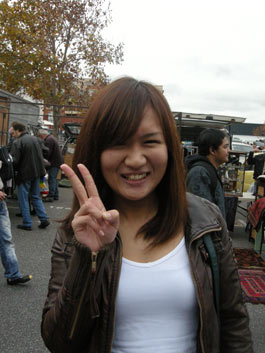A goldmine of produce, food culture and delicious sake and wine that Japan can be proud of. Nagano is not just for skiing.
Were you aware that in recent years, there has been a sudden influx of Australian skiers visiting Japan? Even here in Melbourne, there are various events introducing Japanese ski resorts that have come to run every year. There is a substantial amount of facilities, the resorts are easily accessible, and have the best powder snow in the world. All, of which, are things that bring a huge smile to our faces.
This time, a handful of Australian food and wine expert authors came to visit Nagano. I know that Nagano’s skiing facilities are widely known to be wonderful, however, I’d like to introduce the plentiful food culture and sake that the locals recommend visitors to enjoy while on their skiing trips.
Nozawa Onsen was discovered over 1000 years ago. Being a mere two and a half hours from Tokyo, you can easily visit this hot spring town where ancient roads intertwine and still remain to this day.
The spring named “Ogama” has a peak temperature of close to 100 degrees Celsius, and is a place often used by locals to boil their vegetables, make “Onsen Eggs”, and warm up sake. Normally, the general public cannot enter this area, but in this instance, we were kindly granted access thanks to the owner of the Kiriya Ryokan. (www.kiriya.jp)
You might be wondering what “Onsen Eggs” are. Onsen Eggs are eggs that have been gently cooked using temperatures lower than that which the egg yolk and whites solidify at, being 70℃ and 80℃ respectively. They are gooey and taste divine with dashi soy sauce. Soft boiled eggs are cooked so that the yolk is soft and the egg white is fully cooked, however, these eggs are the cooked to achieve the opposite result.
The area’s “Chijimi spinach” is grown in the midst of this area’s icy climate. Over time, the plant adjusted to the grounds condition, the leaves growing thick and wrinkly, and in turn this type of spinach has a unique look, unlike any other. It is also said to have a concentrated sweetness and umami. This photo depicts one of the locals by the Ogama spring, boiling the Chijimi spinach, before gently kneading it and dipping it in the spring repeatedly to remove any harsh flavours. Without any sharp flavours, it is a really delicious variety of spinach.
The sake that the people of Nozawa love is called “Mizuo”. The indigenous rice grown here is the most suitable for the area, and the local water is the most compatible with the rice. Due to it being a sake brewed with that thinking in mind, it could be said that it goes down best with the locals. (www.mizuo.co.jp)
How about taking a moment to enjoy a break with an appetiser at a quirky bar? It’s called “Mizorezake” and when poured into a glass and stirred, the sake takes on a sorbet-esque state which is a special way of serving this sake. (www.jonnobi.jp/restaurant/index.html)
If you’re after the best in original cuisine, it has to be Kensaku Katagiri. He is also a two-time champion of a nationwide ski conquest. It is amazing that there are many participants in this region who hold the glory of being previous champions of the conquest. With not a single seat to spare in the restaurant, visitors from many different countries were enamoured by the beautiful and delicious cuisine presented to them. The photo above depicts a risotto made from locally grown Koshihikari rice and Parmigiano-Reggiano cheese. “Nozawana pickles” also suited the dish nicely. (http://st-anton.jp/eng/)
At the souvenir store right next door, you can also buy homemade jam that prides itself in being additive-free. Fully ripened fruits are used to make the jam, so for most of their products not even sugar is added. However those which contain sugar only have a hint of brown sugar added to adjust the sweetness slightly. For those from Melbourne who are having trouble finding genuine coffee, you can also pick some up here. (http://www.rakuten.co.jp/st-anton/)
At this long-standing ryokan called “Sakaya”, I met many Australians who were truly enjoying the local Japanese culture to the fullest. Whether it’s food or culture you’re after, you can get a taste of both while feeling at home here in Nagano.
It’s located in the middle of a spot where snow quietly floats to the ground and builds up. They have the best outdoor bathing area ever. In the Michelin Green Guide’s Japanese Version, Nozawa Onsen holds a two Michelin star rating in the hot spring town sector. (http://ryokan-sakaya.com/)
Of course, nights are for drinking parties. At a place called “Himecho”, Nozawana Pickles are paired to be enjoyed with Japanese wine, shochu and of course, karaoke! It is a place where tourists and locals quickly become friends. (http://www8.plala.or.jp/himecho/)
A Japanese breakfast is said to be the most important meal of the day. This is when you should get a good balance of nutrients. (http://www.ryokan-sakaya.co.jp/)
Getting a taste of the local food culture and sake, while also coming into contact with the locals—isn’t this really what making the most of travel is about? Nagano’s culture is the best!
Original article: Masahiko Iga
Photography: Hideaki Yoshimi
Translation: Jessica Waugh




